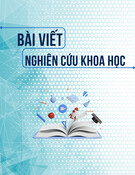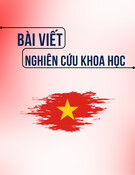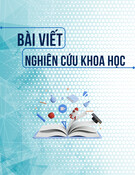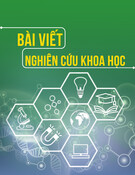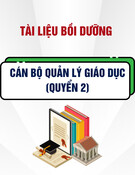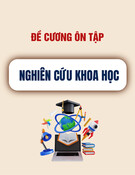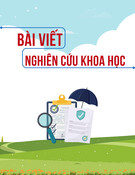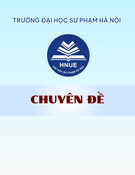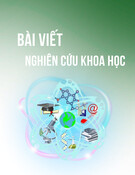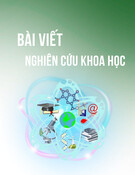
44 Hoa Binh University Journal of Science and Technology - No 14 - 12.2024
PEDAGOGY
THE RELATIONSHIP BETWEEN UNIVERSITY GOVERNANCE AND
EDUCATIONAL QUALITY ASSURANCE
Prof. Dr. Dang Ung Van
Hoa Binh University
Corresponding Author: duvan@daihochoabinh.edu.vn
Received: 15/11/2024
Accepted: 10/12/2024
Published: 24/12/2024
Abstract
The paper have answered the research questions: What is the relationship between governance
and quality assurance (QA) in highe education institution (HEI)? What good practices are there to
concretize the roles and functions of the University Council (UC) in the work of QA? We agreed that
in pricipal, UC is responsible for university governance activities in line with the HEI's development
strategy with 4 important areas of work: Determining vision, mission, cultural values; Building
development strategies and policies including QA policies; Mobilizing resources inside and outside
the institution including investment; and risk management. QA is one of the strategic contents and
therefore is one of the most important policies. Self-assessment of educational quality is a tool for
implementing accountability, one of the contents of governance, and also a condition for HEI to
implement autonomy. Educational quality accreditation is a tool for the State and society to monitor
HEIs in implementing national educational goals and assigned autonomy; it is a measure to protect
consumers - students in the process of developing market-oriented HE.
Keywords: University Council, university governance, educational quality assurance, higher
education.
Mối quan hệ giữa quản trị đại học và đảm bảo chất lượng giáo dục
GS.TSKH Đặng Ứng Vận
Trường Đại học Hòa Bình
Tác giả liên hệ: duvan@daihochoabinh.edu.vn
Tóm tắt
Bài báo đã trả lời các câu hỏi nghiên cứu: Mối quan hệ giữa quản trị và bảo đảm chất lượng
(BĐCL) trong cơ sở giáo dục đại học là gì? Có những thông lệ tốt nào để cụ thể hóa vai trò và chức
năng của Hội đồng trường (HĐT) trong công tác BĐCL? Chúng tôi thống nhất rằng, về nguyên
tắc, HĐT chịu trách nhiệm về các hoạt động quản trị đại học theo chiến lược phát triển của nhà
trường với 4 lĩnh vực quan trọng: Xác định tầm nhìn, sứ mệnh, Giá trị văn hóa; Xây dựng chiến
lược và chính sách phát triển, bao gồm các chính sách BĐCL; Huy động các nguồn lực trong và
ngoài trường, bao gồm cả đầu tư và quản lý rủi ro. BĐCL là một trong những nội dung chiến lược,
và do đó, là một trong những chính sách quan trọng nhất. Tự đánh giá chất lượng giáo dục là một
công cụ để thực hiện trách nhiệm giải trình, một trong những nội dung của quản trị và cũng là điều
kiện để trường đại học thực hiện quyền tự chủ. Kiểm định chất lượng giáo dục là công cụ để Nhà
nước và xã hội giám sát các trường đại học trong việc thực hiện các mục tiêu giáo dục quốc gia và
quyền tự chủ được giao, là biện pháp bảo vệ người tiêu dùng - sinh viên trong quá trình phát triển
theo định hướng thị trường.
Từ khóa: Hội đồng trường, quản trị đại học, bảo đảm chất lượng giáo dục, giáo dục đại học.





